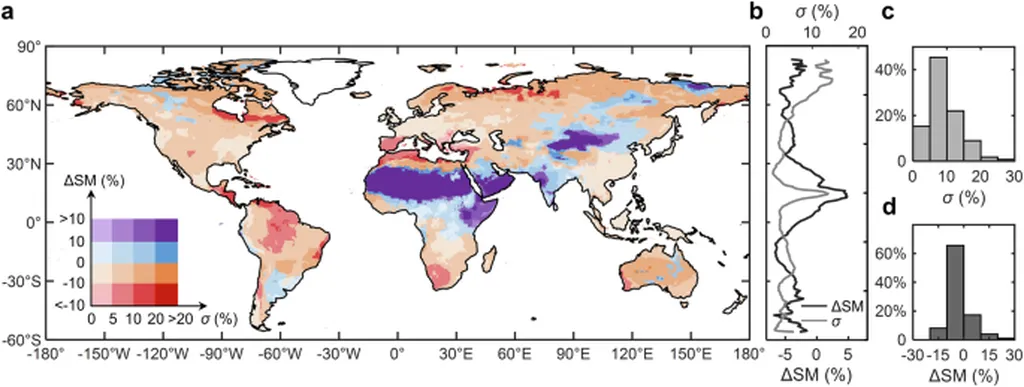In a groundbreaking study published in *Frontiers in Plant Science*, researchers have unveiled a comprehensive framework to quantify the contributions of soil moisture (SM) dynamics, shedding light on its intricate relationship with global ecosystems. Led by Yang Li from the College of Agriculture at Yanbian University, the research leverages GLDAS-Noah SM data spanning from 1948 to 2024 to dissect the structural features of soil moisture variability, offering critical insights for the agricultural sector.
The study employs a novel “three-dimensional decomposition + covariance attribution” approach to decompose Total Soil Moisture Variability (TSMV) into long-term trends and inter-annual variability (IAV). This method allows for a detailed assessment of contributions from different soil depths, seasonal variations, and temporal dynamics. “By understanding these contributions, we can better predict soil moisture dynamics and their impact on agricultural productivity,” Li explained.
One of the most striking findings is the global decline in Total Soil Moisture (TSM) between 2000 and 2024, with decreases observed across all seasons. The research highlights that the 40–200 cm soil layer contributes significantly to TSMV, with notable spatial variations. This layer is crucial for deep-rooted crops and vegetation, making the findings particularly relevant for farmers and agronomists.
The study also explores the correlation between SM and Gross Primary Productivity (GPP), integrating MODIS MCD12C1 and GOSIF GPP datasets. The results reveal a positive correlation between SM and GPP, especially in the 10–100 cm root zone of grasslands and croplands. “This correlation underscores the importance of soil moisture management in enhancing crop yields and ecosystem productivity,” Li noted.
The implications for the agriculture sector are profound. Understanding the spatiotemporal evolution of soil moisture can help farmers optimize irrigation strategies, improve water use efficiency, and mitigate the impacts of droughts. “Agricultural practices can be tailored to the specific soil moisture dynamics of different regions, leading to more sustainable and productive farming,” Li added.
This research lays the groundwork for future developments in precision agriculture and water resource management. By providing a detailed attribution of SM contributions, it enables more accurate predictions and informed decision-making. As climate change continues to affect global soil moisture patterns, such insights are invaluable for ensuring food security and ecosystem health.
The study not only advances our scientific understanding but also offers practical tools for the agricultural community. By bridging the gap between research and application, it paves the way for innovative solutions that can enhance agricultural productivity and resilience in the face of changing environmental conditions.

